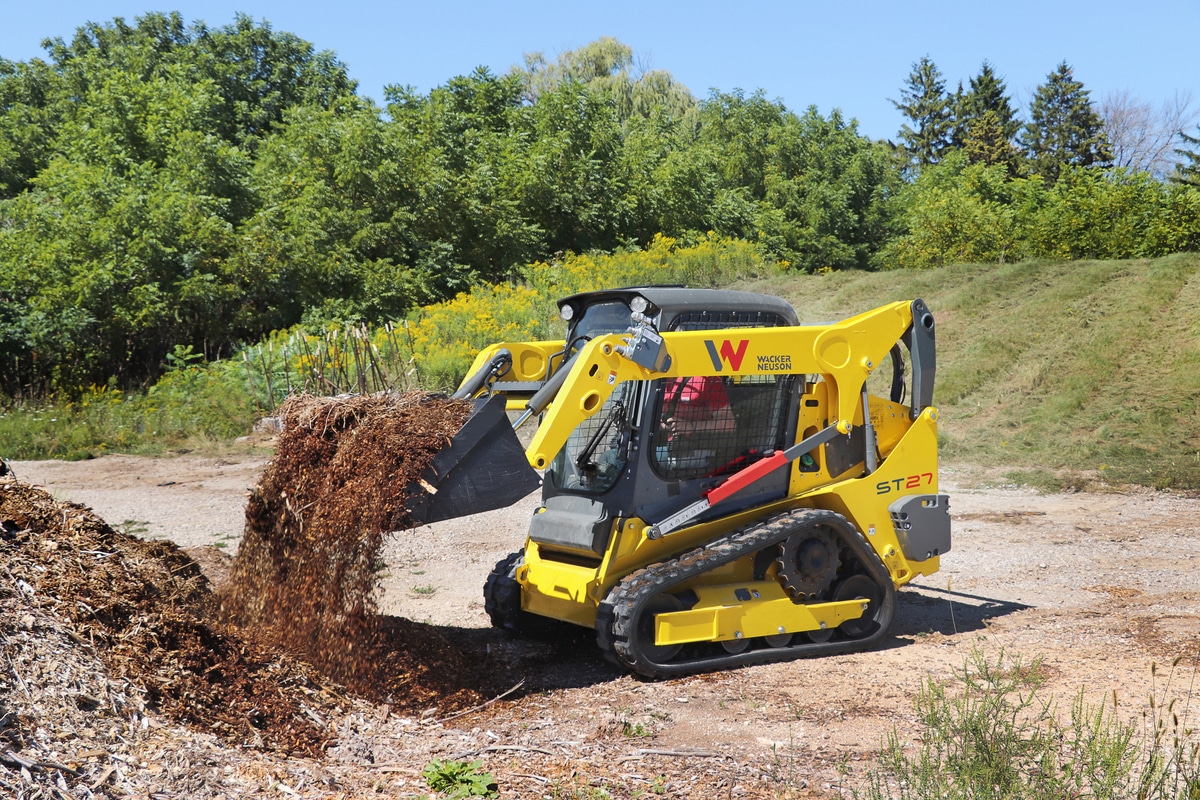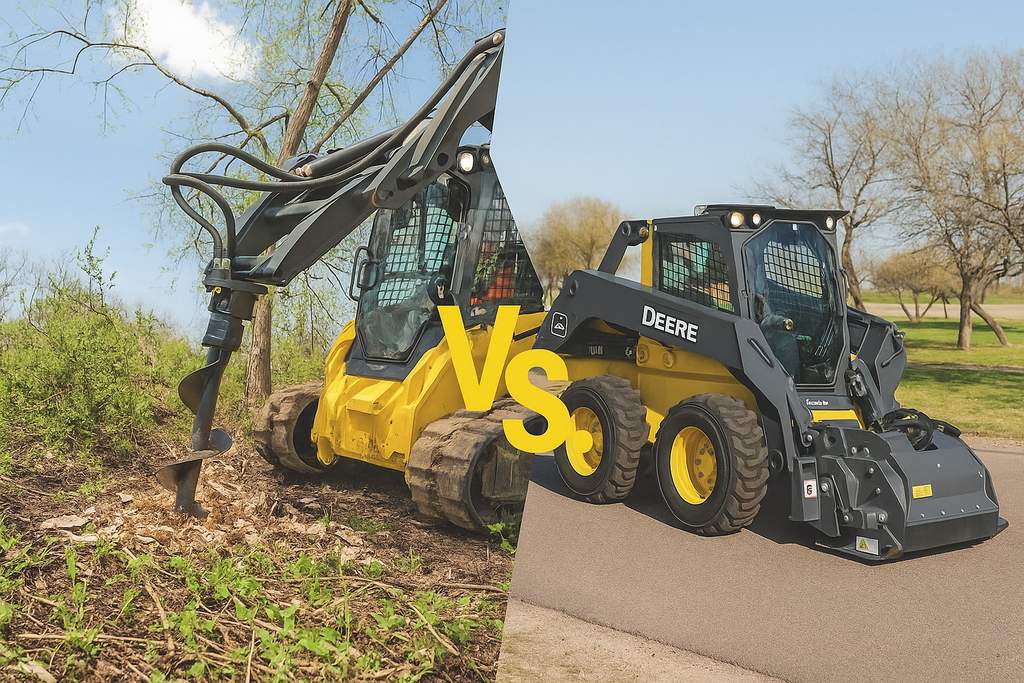Key Tips for Safe and Efficient Compact Track Loader Operation

Over the past decade, the popularity of compact track loaders (CTLs) skyrocketed, and they continue to dominate the compact equipment industry in the North American market. Thanks to their durability, versatility, and ability to navigate uneven terrain, these rugged machines have become mainstays on many jobsites in the construction and landscaping industries.
Despite being designed to tackle a wide array of jobs, operators need to be properly educated in how to operate these machines. Below, we will walk through some key tips for operating your CTL safely and efficiently.
Get to Know Your Machine
Before operating a CTL on a jobsite, it is important to learn as much about the machine as possible. When purchasing new equipment, your dealer is the best source of information throughout the process and beyond. Most dealers will spend time with their customers explaining the key features, such as the loader’s attachments and advanced controls.
Dealers can also provide important technical and maintenance information, such as the machine’s limits and safety features. Some dealers even offer training to help new operators quickly learn the full capabilities of their CTL.
It is important that contractors also implement their own training programs to ensure operators are trained to operate the machines. This is especially important as the next generation of operators are entering the field. A suitable place to start is having a training program in place for new employees and having new employees shadow seasoned operators within the company. This helps retain the knowledge of experienced operators as they move into retirement.
It is also important to read your loader’s operator’s manual before jumping in the cab. This valuable resource contains the machine’s safety features, troubleshooting tips, maintenance schedule, and most importantly, a proper operation guide. Following the manual’s operation guide will help you operate safely and effectively.
Taking the time to read the manual before beginning to operate a CTL is one of the best ways to avoid repair costs in the future and help ensure that you are working at peak performance. Being proactive, rather than waiting until a potential issue arises, will pay off in the long run.
Practice, Practice, Practice
After reading your operator’s manual, it is a good idea to practice operating your machine in a controlled environment. Before operating a CTL on a busy job site with a lot of obstacles, it is wise to take the time to learn what every single button and control in your loader does.
For example, the KIOTI TL50 is equipped with a self-leveling feature that automatically keeps the loader’s bucket or attachment in a horizontal plane when lifting. When enabled, this feature reduces operator fatigue when handling materials. It would be ideal for an operator to see exactly how this feature works in a safe area before putting it to use on a high-traffic jobsite.
Learning the controls, maintaining a slower speed, and practicing smooth movements are the best ways to ease into operating the machine. Operating at a slower pace is a great way to get comfortable and understand the other features of your loader, which helps operators maximize their effectiveness.
Know Your Limits

Understanding your loader’s operating capacity is crucial as you embark on different projects. Exceeding the maximum capacity of a CTL may lead to tipping, posing a risk to individuals’ safety. It can also lead to faster deterioration and compromise its performance.
Be sure to do your research to learn the difference between vertical lift and radial lift. Radial-lift machines lift on a curved path, while vertical lift machines lift on a vertical path. Both can dig and lift materials effectively, but they are each better for certain applications. Vertical lifts are stronger and good for tasks that require vertical reach, such as loading into vehicles or tall areas. Radial lifts are more suited for ground-level jobs that require forward reach – like digging, excavating and backfilling. Picking the right kind of lift is key to completing jobs effectively and taking proper care of your loader.
Perform Regular Maintenance
It is important to regularly monitor the various parts for wear and damage. Quickly addressing any issues helps to avoid malfunction and repair costs. Make it a habit to check tracks for wear or damage to ensure proper tension. Losing a track in the middle of the job makes repairs more difficult.
Ensure fluid levels are at the specified operating range to avoid overheating and other malfunctions. If you find a leak, find the source right away to avoid any damage. Walk around your machine regularly to check for damage. Be proactive about handling any concerns or minor damage. This will go a long way to keeping your machine operating for years.
Above all, ensure all safety equipment is in working order. Operator safety is the most important factor.
Safety First
Most CTLs are designed with safety in mind and have features to help operators reduce risk on job sites. For example, KIOTI’s TL750 features a standard rearview camera and LED front and rear work lights that enhance machine visibility to the front, sides and rear. But even with this increased visibility, the machine still requires proper operation.
Even with safety features, these machines still need to be operated with care. Improper use can lead to accidents involving the operator and other individuals on a jobsite. There are several key factors operators need to think about when operating a track loader.
First and foremost, you should always analyze the job site before beginning to use the machine. Since CTLs are versatile, it is easy to assume they can operate normally in any environment, but there are still areas that should be approached with caution.
Despite being able to operate on different terrains, steep slopes, and soft or wet ground, other uneven terrains can affect the lift capacity and stability of a loader. High-traffic areas can also present issues for CTLs, due to there being less room for the machine and its attachments to maneuver. As a result, it is important to know how much room is needed to perform different actions.
Common Applications

As mentioned before, these machines are popular on construction sites, because of their versatility. Thanks to their compact size, various attachments they can utilize, and the variety of tasks they can accomplish, they are used for both small- and large-scale projects. Here are some of the best ways a CTL can help you on a construction site.
Material Handling and Loading: CTLs are great for tasks like material handling and loading on the job site because they are highly maneuverable due to their low center of gravity. Their tracks provide reliable traction and stability, compared to wheel loaders, allowing them to operate in uneven terrain. Often track loaders have a higher lift capacity, compared to skid steers, allowing them to lift and transport heavier loads safely.
Site Preparation: Before you can get to work, you may find that you will need to prepare your jobsite. Whether you need to clear debris using a grapple, grade the land with a land leveler or move larger materials with a bucket, a CTL – paired with the appropriate attachment – is your go-to machine. CTLs are great choices for small-scale site preparation due to the variety of attachments at their disposal.
Excavation and Digging: CTLs are good options for digging holes or trenches and clearing debris on construction sites. For example, use an auger if you are drilling holes in the ground to install fence posts or if you are planting trees. If you are digging deeper trenches for utilities or irrigation systems, you may want to try using a trencher. With the right attachment for your job, you can count on these loaders to take on excavation, digging or trenching jobs.
Backfilling: Given that CTLs are so versatile, they can also be used to fill in the excavated area around a foundation or structure. Using them for small- or medium-sized projects is not only cost-effective, but it increases efficiency and accessibility due to their agility, compared to a larger machine, such as an excavator.
When operated correctly, a compact track loader is a powerful, earthmoving machine that is built to easily complete a wide range of daily tasks. As with any machine, it is important to be aware of the condition of the machine and its capabilities when operating. By practicing safe operation, keeping your machine in good condition and understanding proper usage, you will be able to get the most out of your CTL on the job.
Justin Moe is the product manager – construction division at KIOTI Tractor.




